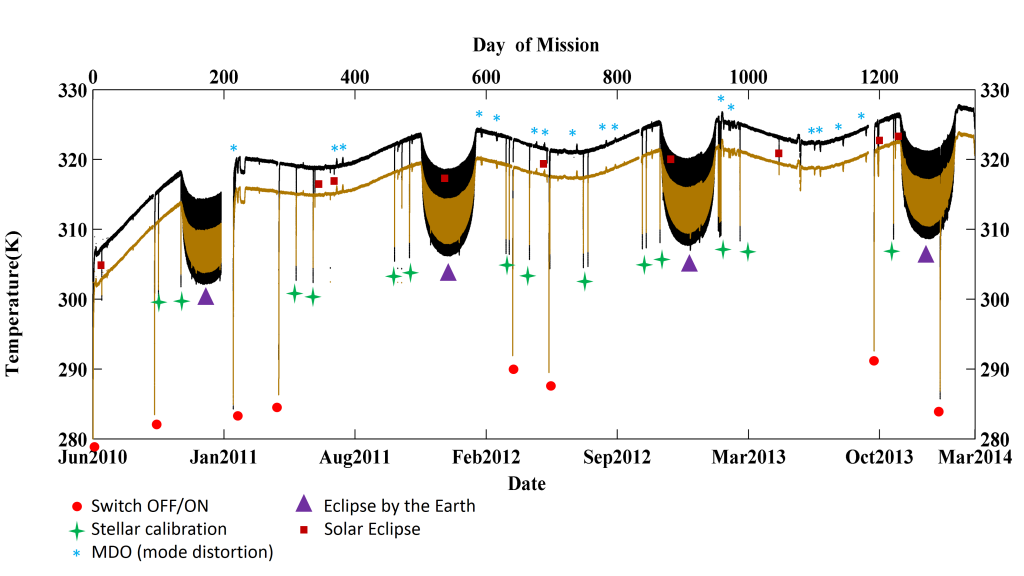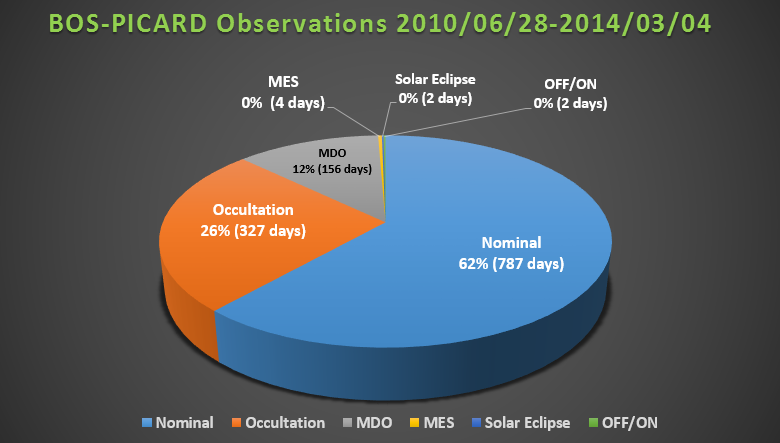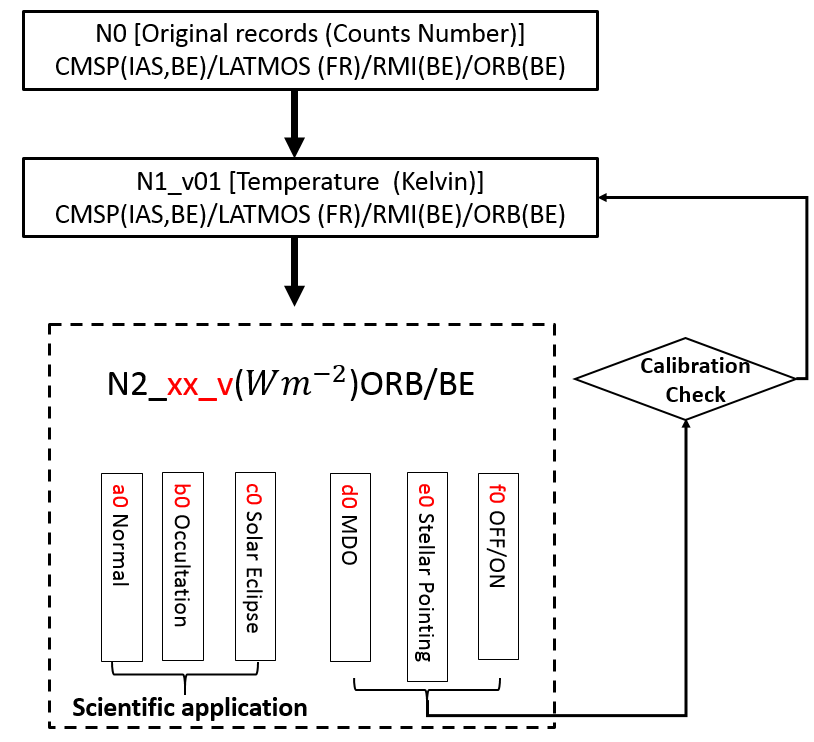PICARD satellite was launched on June 15, 2010. It is orbiting Earth in a nearly circle Sun-syncoronous orbit. Some facts about the PICARD mission.
- Sun-synchronous orbit
- Orbit inclination

- Altitude at separation

- Orbit eccentricity

The missionary duty cycle of Bolometric Oscillation Sensor is started on 28 June, 2010. The plot below shows calibrated N1-level data. The dark solid line is the ![]() , which is the temperature of the black coated main detector
, which is the temperature of the black coated main detector ![]() , and the brown solid line is
, and the brown solid line is ![]() , which is temperature measured at the junction between the mass
, which is temperature measured at the junction between the mass ![]() and
and ![]() . The annual Sun-Earth distance modulation is clearly seen from the curve. In addition to the nominal observation in space (Sun is fully visible in front of BOS), five kinds of measurements is separately marked.
. The annual Sun-Earth distance modulation is clearly seen from the curve. In addition to the nominal observation in space (Sun is fully visible in front of BOS), five kinds of measurements is separately marked.

The missionary duty cycle of BOS is started on 28 June, 2010. The sensor is continuously observing for 1346 days till 4 March, 2014. Thanks to the stability of the platform, the BOS has a very good health. The unit of temperature is Kelvin, ![]() , which is the calibrated reading from NTC
, which is the calibrated reading from NTC ![]() ,
, ![]() from
from ![]() .
.
Data Level
The space acquired data is defined in mainly three levels. The level-0 (N0) is the original data. It is directly downloaded from PICARD satellite. The date rate of the BOS sensor is relative low. The instrument is produced about 1 MB science data. The original N0 data file is kept in three institutions (See the sketch below). The level-1(N1) and level-2(N2) data is obtained with the following process:
- Removing the sharp spikes due to errors of hardware or software;
- Removing the duplicated time stamp;
- Merging files;
- Calibrating the original level-0 data to level-1 data in temperature with physical unit Kelvin;
- Computing the flux from two temperature values (
 );
); - Grouping the data according to the different operation mode of satellite;
- Validating the calibration.
The operation modes of PICARD is mainly covered:
- The normal mode (NMD);
- Modes stellar (MES), the Sun pointing face of the satellite is turned away to a star of deep space;
- Modes distortion (MDO), the satellite is rotating along Z-axis, meanwhile keeping a Sun-pointing;
- SOVAP OFF/ON (OFF/ON), the experiment was switched off then it was immediately switched on again;
- The solar eclipses events (SE), The PICARD satellite is entering the shadows of the Moon by solar eclipse;
- The satellite occultations (SO), From the beginning of November until the mid of February of following year, at each orbit, there are part of signals are blocked by the Earth.

Data distribution acquired during entire PICARD mission. There are 787 days Cumulated data during entire PICARD mission, there are 787 days’ observations during nominal operations, 327 days during occultation, 156 days of satellite rotation (MDO), 2 days OFF/ON, 2 days solar eclipse.
